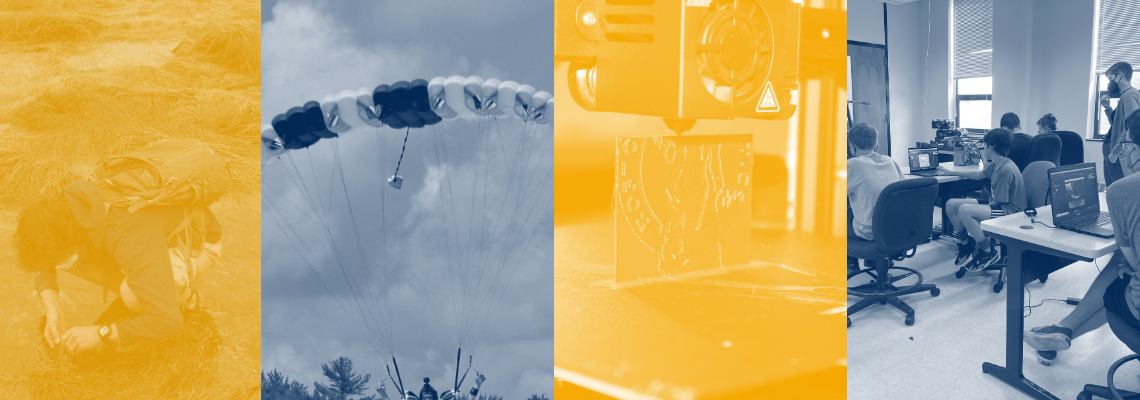Collection of suggested resource and reference material. This includes LEGO and LEGO robotics guides, presentations, external links, and YouTube playlists.
LEGO Robotics Tutorials and Guides
PDFs, external links, and YouTube videos with tutorials and guides for LEGO NXT, EV3, and SPIKE Prime robotics platforms.
SPIKE Prime Simple Robot – PDF
EV3 Simple Wheelbot – PDF
EV3 “Doma” Bot – PDF
NXT Simple Wheelbot – PDF
NXT Simple Treadbot – PDF
NXT 4-Wheel ATV Bot – PDF
LEGO Nomenclature – PDF
Finding the Circumference of NXT and EV3 Wheels – PDF
Getting the Most Out of Your Motors – PDF
Robot Batteries – an Overview – PDF
NXT Guide Sheet – PDF
“Robot Locomotion Basics” – YouTube
“Building a Basic Robot Table” – YouTube
“Using the NXT Touch Sensor” – YouTube
“LEGO for the Blind” – Ext. Link
Scratch Programming Guide – PDF
Getting Started with EV3 Programming – PDF
Programming EV3 Robots Using Mindstorms – PDF
Advanced EV3 Programing – PDF
Using the EV3 Display Block – PDF
EV3 Lessons on Programming and Building – Ext. Link
Advanced NXT Programming – PDF
“NXT – Follow the Line” – YouTube
Free NXT Programs – Ext. Link
“How to buy cheap LEGO – Pick a Brick vs BrickLink” – YouTube
Bricklink, a source for 70,000,000 LEGO Pieces (or more)
www.bricklink.com
LEGO Home page
www.lego.com
LEGO Educational Store
http://www.legoeducation.us/store.cfm?&var=d&ckey=US&lang=eng
Sensors:
*Search online for “LEGO sensors”*
Vernier sensor adapter, use Vernier sensors with the LEGO controllers
http://www.vernier.com/engineering/lego-nxt/
Education.lego.com
https://shop.education.lego.com
Dexterindustries.com
http://www.dexterindustries.com
MindSensors.com, 14 different circuits boarded sensors
http://www.mindsensors.com
HiTechnic.com, 13 different LEGO certified sensors
https://www.hitechnic.com/sensors
Girls & Women in Science and Engineering
These pages serve to provide a starting point for young researchers who are looking for great role models in the fields of science, engineering, inventing, and computer science. Much of this material comes directly from Wikipedia, but at the bottom of each entry in Wikipedia you can find other sources for the work and should look at some of those as well. Good luck hunting up others.
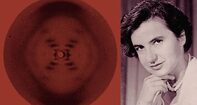
Rosalind Franklin. Born in 1920 in Notting Hill, London, Rosalind was a chemist and X-ray crystallographer and was one of the key players in understanding what the structure of DNA was (double helix). Likely would have received part of the 1962 Nobel Prize for the work on the DNA structure, but died in 1958 at the age of 37.
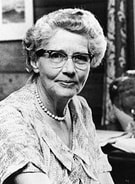
Helen B. Taussig. Born in Cambridge, Massachusetts in 1898, Dr. Taussig was a renowned cardiologist, specializing in pediatric cardiology. Along with Alfred Blalock and Vivien Thomas, Dr. Taussig was instrumental in developing a treatment for cyanotic heart defects (often resulting in blue baby syndrome). She was also instrumental in banning thalidomide, a sleeping drug that was resulting in phocomelia in the babies (abnormal limbs). She was the first woman and the first pediatrician to serve as the head of the American Medical Association and received the Presidential Medal of Freedom in 1964.

Ada Lovelace. Born in 1815 in England, Ada was a mathematician and worked closely with Charles Babbage on programming the Difference Engine, the first advanced mechanical computer.
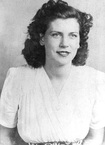
Margaret Knight. Born in York Maine in 1838, Margaret invented, among other things, the square bottomed paper shopping bag. See the original patent at the USPTO website.

The ENIAC Programmers of the 1940 and 50s. Kay McNulty, Betty Jean Jennings (Jean Bartik), Betty Snyder, Marlyn Wescoff, Fran Bilas and Ruth Lichterman (not all shown in image).
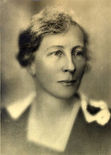
Lilian Gilbreth. Born in 1878 in Oakland California, Lilian married Frank Gilbreth of Fairfield Maine. Lillian was arguably one of the earliest practicing woman engineers in the United States and earned numerous degrees including her Ph.D. from Brown University.
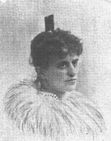
Helen Blanchard. Born in Portland Maine in 1840. Helen invented the zig-zag sewing machine and had 28 patents during her career as an inventor.
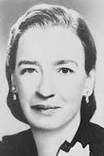
Grace Hopper. Born in 1906, Grace was one of this countries earliest and most noted computer scientists.
First enlisted in the Navy in 1943 during WWII and while occasionally retired, was finally retired in 1986 after almost 43 years of service and at the rank of Rear Admiral. Hopper worked with the early Harvard Mark I computer and was one of the inventors of the COBOL programming language.
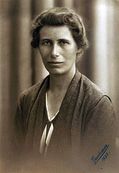
Inge Lehmann. Born 1888 in Denmark, Lehmann studied mathematics and physical science and received a Magisterii (Master’s) degree in both of these fields. Lehmann worked in the field of geodetics engineering for most of her career and in 1936 postulated in a paper that the earth had a distinct inner core that was different than the mantle of the earth. It had previously been thought that the entire center of the planet was molten.
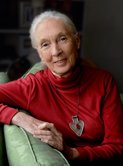
Dr. Jane Morris Goodall. Born 1934, Jane is the world’s foremost expert on chimpanzees. Dr. Goodall has spent over 45 years studying chimpanzees in the Gombe Stream National Park in Tanzania, Africa. www.janegoodall.org
Sydney Dittman. Sydney is on record as being the youngest person to receive a US Patent. She received a patent for an invention that made it easier to grip circular knobs, such as on drawers or cabinet doors.
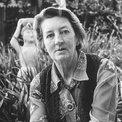
Mary Leakey. Born in 1913, Mary was a British paleoanthropologist. Mary and Louis Leakey are two of the most renowned anthropologists. Their work in the Olduvai gorge in Eastern Africa changed the way we think about where we came from as a species. www.leakeyfoundation.org/the-leakey-family/
Women in Computer Science: Getting involved in STEM
Great online article for teachers; parents; guidance counselors, and girls interested in the Computer fields.
http://www.computerscience.org/resources/women-in-computer-science/
FabFems
Find role models from around the world
http://www.fabfems.org/
STEM Role Models
http://www.stemrolemodels.org/
GoGrad: Women and Master’s Degrees
Includes profiles of women; their degrees; some historical background; and has a lot of information about getting a graduate degree, particularly using online resources.
http://www.gograd.org/women-and-masters-degrees/
Women in Tech
See up to date information on how money are changing the face of Information Technology
http://www.mbaonline.com/women-in-tech/
List of Women Inventors (good list, but commercial site with Pop Ups)
http://inventors.about.com/library/blwomeninventors.htm
Girls Go Tech, from the Girl Scouts
http://www.girlsgotech.org/
Women, Minorities, and Persons with Disabilities Tapping the Talent
An agenda for action for business to increase the talent available to them by encouraging more young women into science, engineering and technology. (1996)
http://www.lboro.ac.uk/orgs/opp2000/
Association for Women in Mathematics
http://www.awm-math.org home page
http://www.awm-math.org/education.html educational web page
Society of Women Engineers
www.societyofwomenengineers.org
Others to add:
Diane Fossey, Gorilla researcher and advocate
Merit-Ptah, physician, 2700 BCE
Nancy Grace Roman, 1925, American astronomer
Rachel Carson, 1907, Marine biologist, author, conservationist
Dorothy Hodgkin, 1910, Nobel prize winning British Biochemist
Jocelyn Bell Burnell, 1947, Irish astrophysicist
Sally Ride, 1951, American physicist and astronaut. First American woman in space.
Boys and Men in Science
These pages serve to provide a starting point for young researchers who are looking for great role models in the fields of science, engineering, inventing, and computer science. Much of this material comes directly from Wikipedia, but at the bottom of each entry in Wikipedia you can find other sources for the work and should look at some of those as well. Good luck hunting up others.
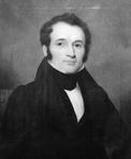
Senator John Ruggles. Born in Thomaston Maine in 1789, John Ruggles was issued Patent #1 for his invention (improvement) of a wheel for railroads. The Senator is also known as the “father of the US Patent Office” for working to establish the patenting system here in the United States. John was not issued the first patent, a number of patents were issues prior to his in 1836, but they were not numbered.
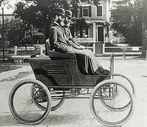
The Stanley Brothers. Francis and Freelan Stanley, from Kingfield, Maine, built up the world’s largest automobile company until around 1908, when the internal combustion engine took over the field.
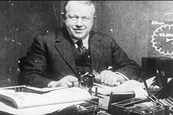
Frank Gilbreth, Sr. Born in Fairfield, Maine in 1864, John was a time-motion and efficiency expert. Made famous by the book and film “Cheaper by the Dozen” of 1950. Married to famous psychologist and industrial engineer Lillian Gilbreth. The couple had 12 children.
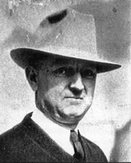
Frank Crowe. Chief engineer for the Hoover Dam (largest dam ever built at the time). Graduated from the University of Maine in Orono.
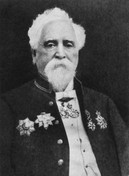
Sir Hiram Maxim. Inventor of smokeless gunpowder and the Maxim machine gun. From Sangerville, Maine. Also known for building a railed airplane that lifted off the ground, but was restrained by chains to prevent it from going too high (more than a few inches) and likely crashing.
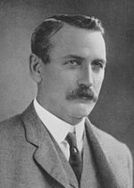
John Frank Stevens. An engineer from West Gardiner, Maine. Stevens attended the Maine State Normal School (now University of Maine at Farmington). Stevens was instrumental in his work with the Great Northern Railroad (where he rose from a location engineer to the general manager) and for serving as 3 years as the Chief Engineer for the Panama Canal project during its construction.
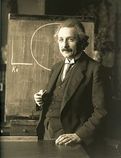
Albert Einstein. Born in 1879, Dr. Einstein was one of the twenty centuries most renowned scientists. Developing the General Theory of Relativity and the E=mC^2 formula to relate how energy and mass were connected.

Alexander Graham Bell. Born in 1847, Bell was an American scientist, inventor, and engineer. Bell is credited with many inventions – his patent for the telephone (Improvement in Telegraphy) in 1876 is the widest known. Bells’ first invention was at the age of 12 where he helped design and build a wheat dehusking machine.
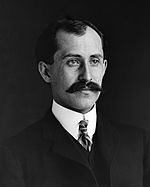
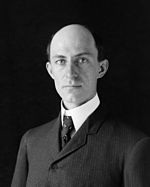
Orville and Wilbur Wright. Noted as the first humans to achieve powered flight in 1903 with the Wright Flyer I. But there is much dispute in the aviation world if the Wright brothers were the first or if Gustave Whitehead predated their flight.
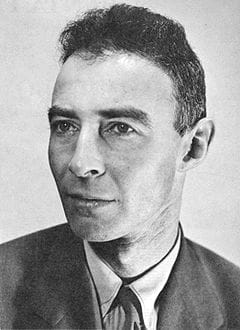
J. Robert Oppenheimer. Born in 1904, J. Robert was a theoretical physicist. Head of the Los Alamos Laboratory during WWII, location where the atomic bombs were first developed.
Online Resources
The following information does not include any form of endorsement from STEM Outreach or its staff. We only post here if we have already checked to make sure it is not an obviously fraudulent site, but use due diligence with anything as important as your child’s education or your educational expenses.
U.S. FIRST: For Inspiration of Science and Technology
www.firstinspires.org
FIRST LEGO League Home Page
https://www.firstinspires.org/robotics/fll/
NE FIRST https://www.nefirst.org/
Robotics Institute of Maine (RIM) https://www.rimaine.org/
Financial Aid for STEM Students – www.affordablecollegesonline.org/college-resource-center/financial-aid-for-stem/
College Success for Women in STEM – www.affordablecollegesonline.org/women-in-stem/
STEM Careers (Minnesota State) careerwise.minnstate.edu/careers/stemcareers
Women in STEM careers careerwise.minnstate.edu/careers/womenstem.html
Empowering Girls in STEM bootcamp.pe.gatech.edu/blog/how-to-empower-girls-in-stem/
Physics curriculum from the Glenbrook South High School in Glenview, Illinois. Can be used free on-line and has some good units. http://www.physicsclassroom.com/
This curriculum is an excellent place to start with engineering. Put together by
http://teachengineering.org/
4-H Robot Curriculum (whole book set is $44.95 or you can purchase the books individually) http://www.4-h.org/resource-library/curriculum/4-h-robotics/
RoboLab Curriculum at Tufts Center for Education Engineering Outreach http://www.ceeo.tufts.edu/robolabatceeo/
Botball Curriculum from KIPR (KISS Institute of Practical Robotics) http://www.kipr.org/botball
NASA Robot Educational http://www.robotics.nasa.gov/edu/educators.php
Carnegie Mellon University. Robotics Academy http://www.rec.ri.cmu.edu/education/roboticscurriculum/index.html
RB5X Robot in the Classroom from General Robotics http://www.rbrobotics.com/curriculum.htm
Electronic Circuits for the Evil Genius (57 Lessons with Projects) http://www.mhprofessional.com/getpage.php?c=engarch_cutcher.php&cat=113
Maine Computer Science Teachers Association
www.mainecsta.org
Maine Science Teachers Association
https://msta.wildapricot.org
Maine Mathematics and Science Alliance
www.mmsa.org
Robotics Online, from the Robotic Industries Association
http://www.robotics.org/
Article on Static Accumulation and Discharge (good reading for electronic discharge protection and electronics)
http://www.wolfsonelectrostatics.com/04_news/pdfs/controllingstaticelectricityinmodernbuildings.pdf
Trinity College Fire Fighting Robot Competition
https://trinityrobotcontest.org/
Women’s Adventures in Science website. Learn about some cool women scientists. From the National Academies
http://www.nap.edu/collection
NASA Wavelength: A digital collection of Earth and space science resources for educators
https://science.nasa.gov/learners/wavelength
DIY Hacking – A website of open-sourced material
https://diyhacking.com/
All About Circuits
http://www.allaboutcircuits.com/
Career Link: Careers for people who like numbers
http://www.learnhowtobecome.org/careers-for-numbers-people/


